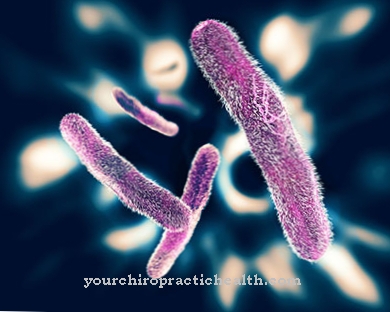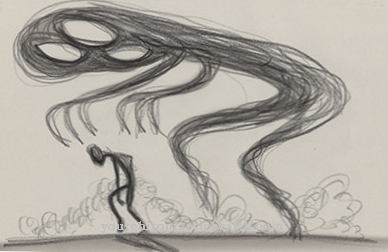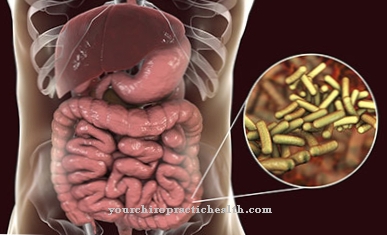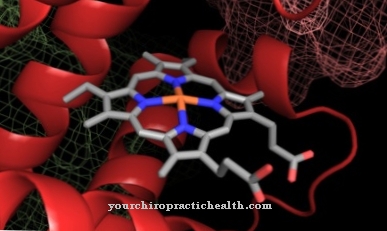In the Polychondritis it is a disease of the cartilage. The disease is very low in the population. In some cases, polychondritis is also called Panchondritis and Polychondritis atropicans designated. The disease is related to rheumatic factors. Inflammation of the cartilage, which occurs again and again, is typical of polychondritis. In this way, the stability of the cartilage is gradually reduced.
What is polychondritis?

© VectorMine - stock.adobe.com
As a result of chronic inflammation of the cartilage in the context of the Polychondritis softens the tissue. As a result, the cartilage may become deformed and after a while it will no longer be able to fully perform its normal functions. The disease was first described in 1923 by a specialist in internal medicine, Doctor von Jaksch.
A synonym for polychondritis is Meyenburg-Altherr-Uehlinger syndrome. The disease extends over a long period of time and leads to a gradual destruction of the cartilage. To this day, the causes of the development of the disease are not yet fully understood. Since the immune system is assumed to be involved, polychondritis is now one of the autoimmune diseases.
causes
So far, the causes for the development of polychondritis are still unclear. There are only a few assumptions that have not yet been made. However, numerous doctors and researchers assume that certain autoimmune processes contribute to the development of the disease. For this reason, polychondritis is included in the category of autoimmune diseases.
Symptoms, ailments & signs
A number of symptoms are typical for polychondritis, which are usually very similar in the affected patients. In the context of polychondritis, the sick people suffer from inflammation of the cartilage, which occurs repeatedly. The time intervals between the attacks range from several weeks to a few months.
Due to the inflammatory processes inside the cartilage, it loses its stability. Over time, the cartilage is less and less able to carry out its normal functions and tasks. In principle, it is possible that polychondritis occurs in all areas of the human organism that contain cartilage.
However, it has been shown that the joints in particular are particularly likely to be affected by the inflammatory processes. The inflammation of the cartilage is usually accompanied by pain in the diseased areas. In most cases, the painful conditions are perceived as very intense by the affected patients. Polychondritis is also possible in the area of the nose and ears.
This is true at least for those areas that have cartilage. A loss of strength in the cartilage of the nose causes it to move downwards. As a result, there is a more or less visible change in the shape and appearance of the nose. If the polychondritis occurs in the area of the ears and the cartilage located there, a so-called perichondritis usually develops in parallel.
In addition, polychondritis may be associated with a few other potential complaints. These include, for example, inflammation of the eyes, deterioration in hearing or hearing loss, as well as diseases of the valves of the heart. Polychondritis can sometimes cause breathing difficulties, especially when the cartilage of the larynx is affected by the disease.
Although the disease can affect all organs and tissues of the organism that contain cartilage, polychondritis is primarily seen in cartilage that is often affected by arthritis. In addition, the cartilages of the nose and ears are often affected by the recurring inflammation. This creates a so-called saddle nose in many patients. The typical deformations of the ear are also known as cauliflower ears.
Diagnosis & course
Various methods of examination technique are suitable for diagnosing polychondritis. If the disease is suspected, the complaints must be clarified promptly by a suitable specialist. This is where the patient interview takes place, which the doctor conducts with the person concerned. The patient is encouraged to describe all complaints as precisely as possible to the treating specialist.
The doctor also asks questions about the person's living conditions and consumption habits. In this way, a suspected diagnosis of the disease is possible. In the second step of the diagnosis, the suspicion is checked and strengthened by means of various investigative procedures.
Typical parameters such as an increase in C-reactive protein, an increased concentration of antibodies and various rheumatoid markers are revealed in laboratory tests. In addition, EKG examinations and hearing tests are usually carried out.
Complications
In most cases, polychondritis results in an inflammation of the cartilage. This inflammation can be fraught with pain and other discomfort. Complications usually arise if this inflammation is not treated and spreads to other parts of the body. The stability of the cartilage is significantly reduced by the polychondritis, so that difficulties in everyday life can arise for the patient.
Likewise, the patient's resilience is generally reduced and most of those affected suffer from joint wear. In particular, severe pain occurs during exertion, so that sporting activities are no longer possible for the person concerned. In children, polychondritis can also delay development.
In many cases, polychondritis also spreads to the eyes, which can lead to eye inflammation. Heart problems can also become noticeable, and breathing problems can also occur. Treatment of polychondritis is carried out with the help of drugs. There are usually no complications. A healthy lifestyle also has a very positive effect on polychondritis.
When should you go to the doctor?
A gradual decrease in exercise capacity is a sign of a health irregularity. A doctor should be consulted as soon as the person concerned is consciously aware of the decline in physical strength or as soon as everyday life is impaired. A feeling of inflammation in the organism, irritation or an increased body temperature should be presented to a doctor. If general malfunctions are found, this is an alarming signal that should be clarified. Loss of hearing, red eyes or irregularities in the heart rhythm should be examined and treated. If you feel ill, feel generally unwell or have impaired breathing, a doctor is required.
Deformations in the face are to be interpreted as a warning signal from the organism. Changes in the shape of the nose or ears should therefore be discussed with a doctor. If instability is perceived in the regions of the body where cartilage can be palpated, the observations should be discussed with a doctor. Especially in the face in the area of the nose with polychondritis, the firmness of the cartilage can be checked and adjusted in a few simple steps. The disease is also characterized by pain, which the patient describes as very intense. A doctor's visit is necessary in order for the correct medication to be administered.
Treatment & Therapy
If an acute inflammation occurs in the context of polychondritis, cortisone is often used.Otherwise, the therapeutic measures are mainly based on where the symptoms are located. Concomitant symptoms of polychondritis are, for example, diseases of the blood vessels, conjunctivitis and inner ear hearing loss. In connection with polychondritis, a loss of body weight, fatigue and night sweats are symptoms that may need to be treated.
prevention
Since the causes of polychondritis have not been adequately researched, there are no reliable statements regarding the prevention of the disease.
Aftercare
In most cases, those affected with polychondritis have no special and direct follow-up measures available. In the case of this disease, a doctor should ideally be contacted at an early stage so that further worsening of the symptoms or further complications can be prevented. The polychondritis cannot heal itself, so treatment by a doctor must always be carried out.
The treatment of polychondritis is usually done through the use of different creams or ointments that contain cortisone and can relieve the symptoms permanently. Those affected should make sure to use and dose the creams correctly so that the symptoms can be relieved permanently and correctly.
Since polychondritis can also lead to severe other side effects and complaints, these should also be treated properly. Above all, the loss of body weight is to be treated so that there are no deficiency symptoms. As a rule, no special aftercare is necessary. If the polychondritis is recognized late, this can lead to hearing damage, so that those affected are dependent on wearing a hearing aid.
You can do that yourself
Since it is not yet known exactly how polychondritis develops, only its symptoms can be treated. For example, hearing loss is compensated for with a hearing aid and eye inflammation is treated with drops.
Polychondritis is considered an autoimmune disease, so alternative therapies can contain the disease and reduce the inflammatory flare-ups. Alternative therapies include, for example, drainage or detoxification. There are now many substances that are known to detoxify, such as healing clay, various homeopathic drugs, phytopharmaceuticals or orthomolecular substances. Patients should seek advice from appropriately trained doctors or alternative practitioners.
Intestinal culture is a particular focus in autoimmune diseases. It should be cared for with fresh, fiber-rich food, little alcohol, sugar and fat. At the same time, patients should be careful to eat enough food despite possible pain in order to avoid unnecessary weight loss.
Even if most polychondritis patients are no longer able to exercise, they should exercise as much as possible. Long walks in the fresh air support the immune system in the fight against inflammatory substances in the body. Fixed rest periods and adequate sleep also support healing. Patients with polychondritis should also avoid nicotine. Support groups are a great way to interact with other patients. The German Rheuma League has the appropriate address (www.rheuma-liga.de).



.jpg)








.jpg)



.jpg)










.jpg)
